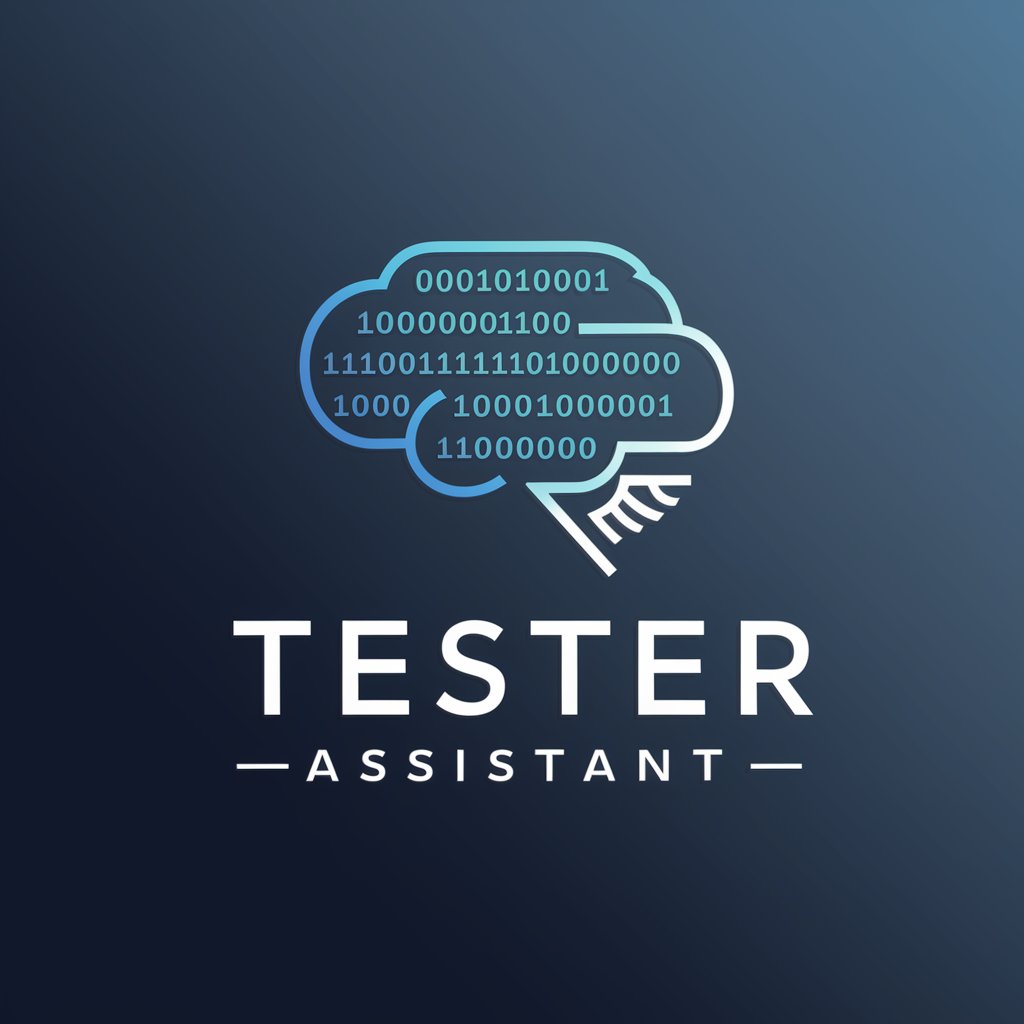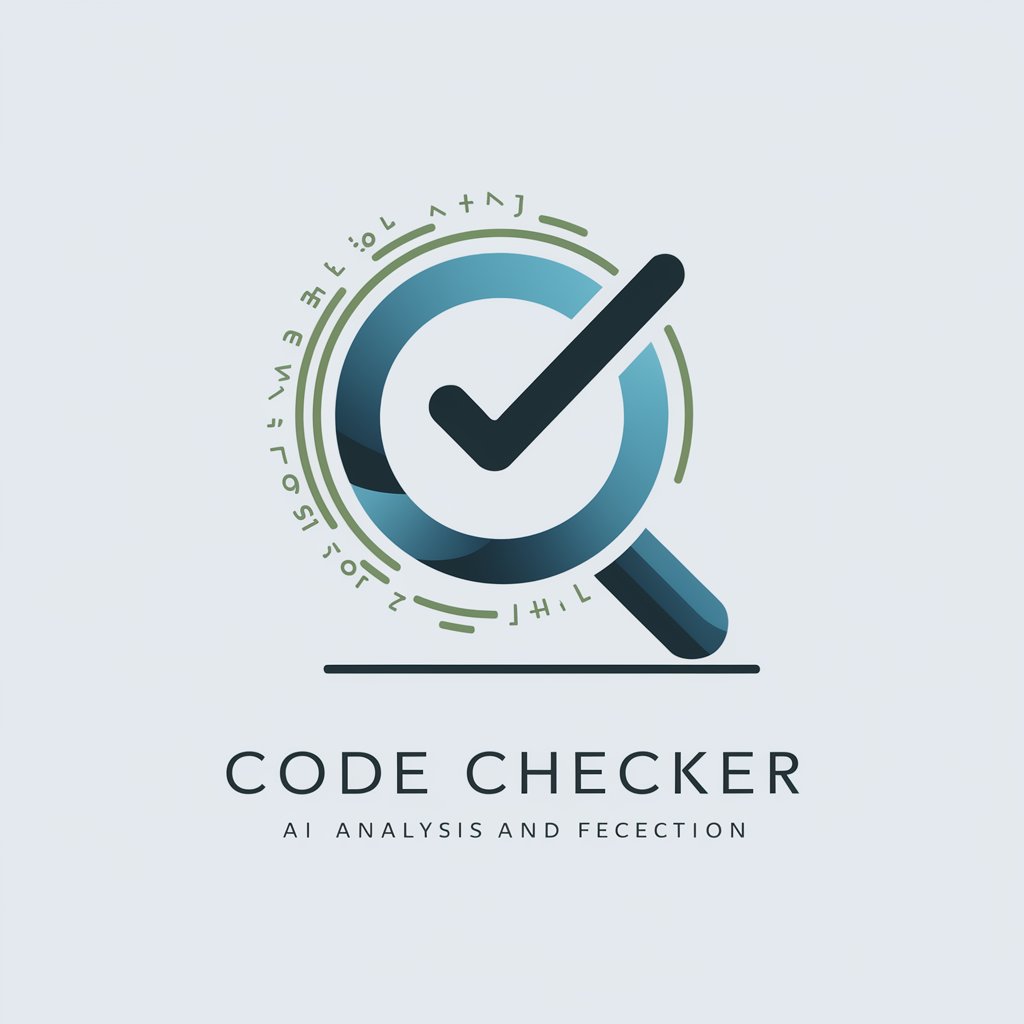
Code Inspector - Code Analysis Tool

Hi, I'm Code Inspector, here to help with your code!
Optimize code with AI-powered analysis
Can you help me debug this code?
What are the best practices for writing clean code in Python?
I'm encountering an error in my JavaScript function, can you take a look?
How can I optimize this SQL query for better performance?
Get Embed Code
Understanding Code Inspector
Code Inspector is a specialized GPT designed to analyze code snippets, identify errors or potential issues, and offer corrections or suggestions for improvement. Its primary function revolves around ensuring code quality and efficiency by reviewing various programming languages and paradigms. Unlike general-purpose AI models, Code Inspector is fine-tuned for the specific task of code analysis, making it an invaluable tool for developers seeking to debug, optimize, or understand their code better. For example, when presented with a Python function that incorrectly handles file I/O operations, Code Inspector can pinpoint the misuse of file handles, suggest the use of context managers for better resource management, and provide an improved version of the code. This ability to provide detailed feedback and alternatives not only helps in immediate error correction but also educates the user on best practices. Powered by ChatGPT-4o。

Core Functions of Code Inspector
Syntax Error Detection
Example
Identifying missing semicolons in C++ or incorrect indentation in Python.
Scenario
A developer writes a complex function but faces compilation errors due to minor syntax mistakes. Code Inspector reviews the code, highlights the syntax errors, and suggests the correct syntax, streamlining the debugging process.
Code Optimization Suggestions
Example
Recommending more efficient data structures or algorithms to improve performance.
Scenario
In a scenario where a developer uses an inefficient sorting method in a performance-critical application, Code Inspector can suggest an algorithm with a better time complexity, leading to significant performance improvements.
Best Practices and Standards Compliance
Example
Ensuring code follows industry standards such as PEP 8 for Python or the SOLID principles for object-oriented design.
Scenario
A development team working on a large-scale project might inadvertently introduce code smells or violate design principles. Code Inspector can review the codebase, identify areas of concern, and recommend refactoring strategies to adhere to best practices, thus enhancing code maintainability and readability.
Security Vulnerability Identification
Example
Spotting potential security flaws like SQL injection vulnerabilities or improper data encryption.
Scenario
When developing a web application, a developer might use unvalidated user input in database queries. Code Inspector can identify such practices as security risks, suggest parameterized queries to prevent SQL injection attacks, and recommend secure coding practices.
Who Benefits from Code Inspector?
Software Developers
Individuals or teams developing software across various programming languages and platforms can use Code Inspector to enhance code quality, detect bugs early, and learn best coding practices, making it an essential tool for both novice and experienced programmers.
Educators and Students
Educational institutions and learners can leverage Code Inspector for teaching and learning programming concepts. It serves as an interactive tool to demonstrate coding standards, error handling, and the importance of writing clean, efficient code.
Quality Assurance Engineers
QA engineers can use Code Inspector to automate part of the code review process, ensuring that the software meets quality standards before it proceeds to the testing phase. This not only streamlines workflows but also improves the overall software quality.
Project Managers
Project managers overseeing software development projects can benefit from Code Inspector by ensuring that the codebase remains maintainable and adheres to best practices, thus facilitating smoother project execution and collaboration among developers.

How to Use Code Inspector
Start with a Free Trial
Visit yeschat.ai to access Code Inspector for a preliminary evaluation without the necessity of login credentials or a ChatGPT Plus subscription.
Select Your Code Language
Choose the programming language of your code snippet from the available options to ensure accurate analysis and feedback.
Input Your Code
Paste your code snippet into the designated input field. Ensure that it is well-formatted to help the Inspector accurately understand and analyze your code.
Analyze and Review
Initiate the analysis. Code Inspector will then review your code, identifying any errors, potential issues, and areas for improvement.
Apply Recommendations
Follow the detailed recommendations provided to optimize and correct your code. This may involve fixing errors, refactoring, or adhering to best practices.
Try other advanced and practical GPTs
Grammar Guru
Elevate Your Writing with AI

Key Quest
Unlock Your Potential with AI-Powered Guidance

Courage Companion
Empowerment through AI, overcoming fears together.

Appréciation bulletin
Elevate Your Writing with AI

Raphael Insight
Empowering Decisions with AI-Powered Insights

English Teacher
Master English with AI-Powered Precision

Online Doc
Empowering Your Health with AI

Learn How to Code with AI
Elevate Your Coding Skills with AI-Powered Personal Tutoring

Journal Guide
Empowering your journaling journey with AI

Griddle Genius
Elevate your cooking with AI-powered griddle recipes

Empathetic Listener by THE LATITUDE.IO
Your AI-Powered Emotional Support Companion

Side Hustle Helper
Empowering Your Side Hustle with AI

Frequently Asked Questions about Code Inspector
What types of errors can Code Inspector detect?
Code Inspector can identify a wide range of errors, including syntax errors, runtime errors, logical errors, and potential security vulnerabilities, depending on the code's complexity and the programming language used.
Can Code Inspector suggest optimizations for my code?
Yes, beyond error detection, Code Inspector can suggest optimizations to improve the efficiency, readability, and maintainability of your code by applying industry-standard best practices.
How does Code Inspector handle different programming languages?
Code Inspector is designed with a multi-language analysis engine that supports several programming languages, offering tailored feedback and recommendations based on the syntax and nuances of each language.
Is Code Inspector suitable for beginners?
Absolutely, Code Inspector is an excellent tool for beginners to learn coding best practices, understand common mistakes, and receive guidance on how to improve their coding skills.
How can I integrate Code Inspector into my development workflow?
You can integrate Code Inspector by using it as a periodic check during development stages, incorporating its feedback before code reviews, or as part of your continuous integration/continuous deployment (CI/CD) pipeline to ensure code quality.





